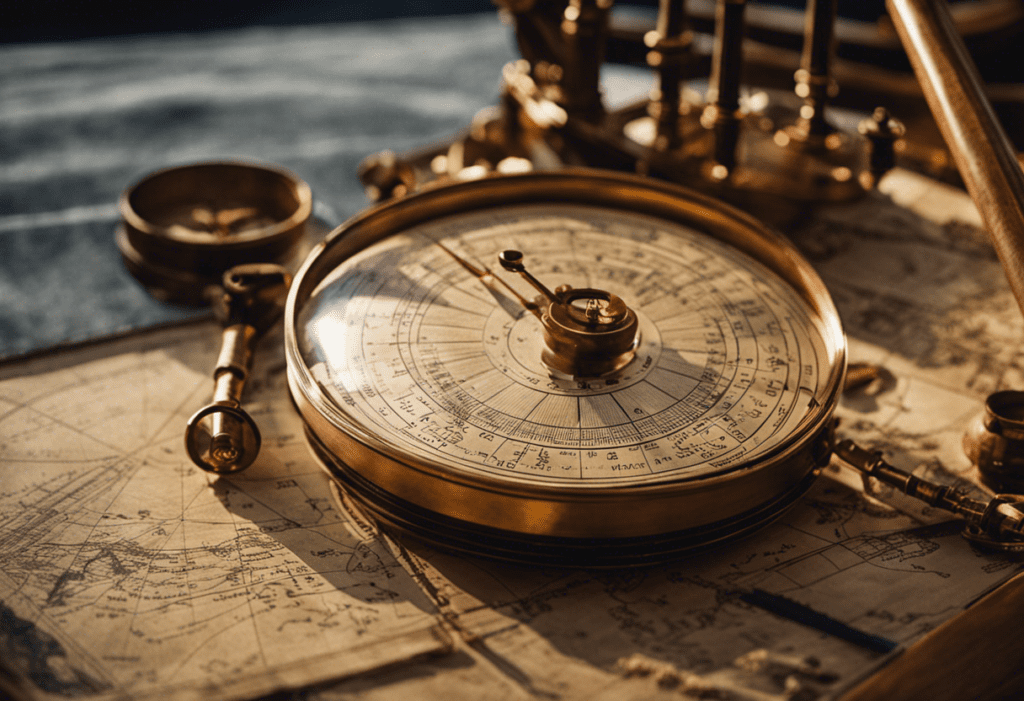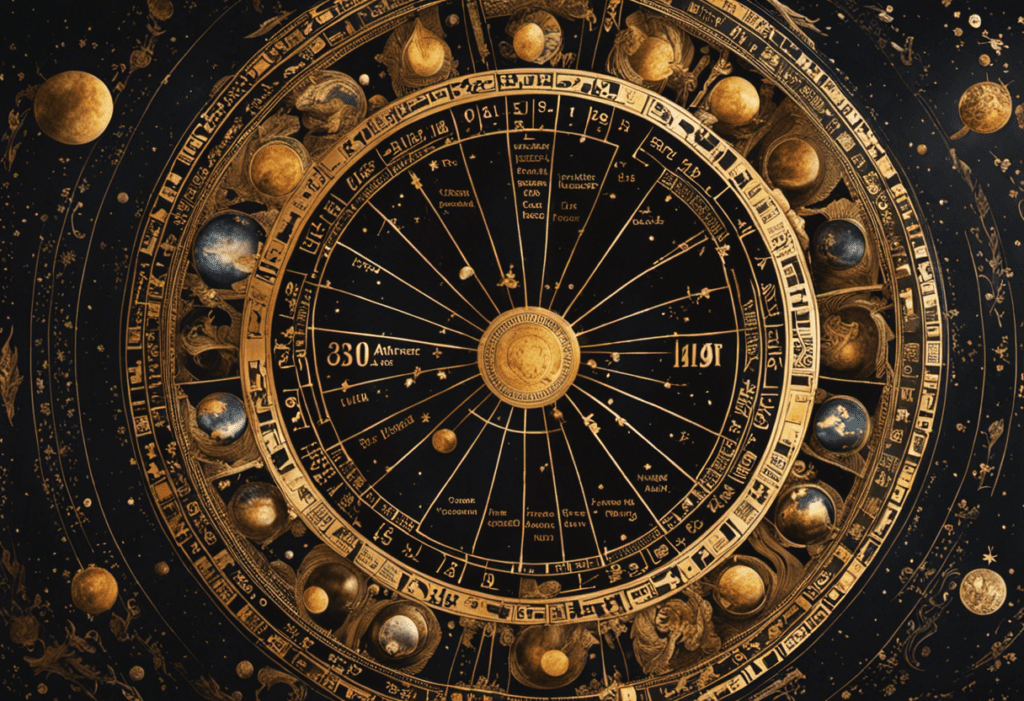In the vast expanse of ancient Greek maritime navigation, the nautical calendar served as the guiding star for sailors, ensuring their safe and timely voyages. Through meticulous timekeeping practices, these seafarers harnessed the power of celestial bodies, water clocks, and the lunar cycle to navigate the treacherous waters.
This article delves into the fascinating world of maritime timekeeping in ancient Greece, exploring the intricacies of the nautical calendar and shedding light on the remarkable ingenuity possessed by these ancient mariners.
Key Takeaways
- Timekeeping was crucial for accuracy and efficiency in maritime navigation in ancient Greece.
- Sundials and water clocks were used for precise time measurements during daylight hours and in rough waters.
- Accurate timekeeping improved calculations, increased efficiency, and ensured the safety of maritime travel.
- Greek advancements in timekeeping influenced the development of modern clocks and spread to other cultures, shaping their time measurement systems.
The Importance of Timekeeping in Ancient Greek Maritime Navigation
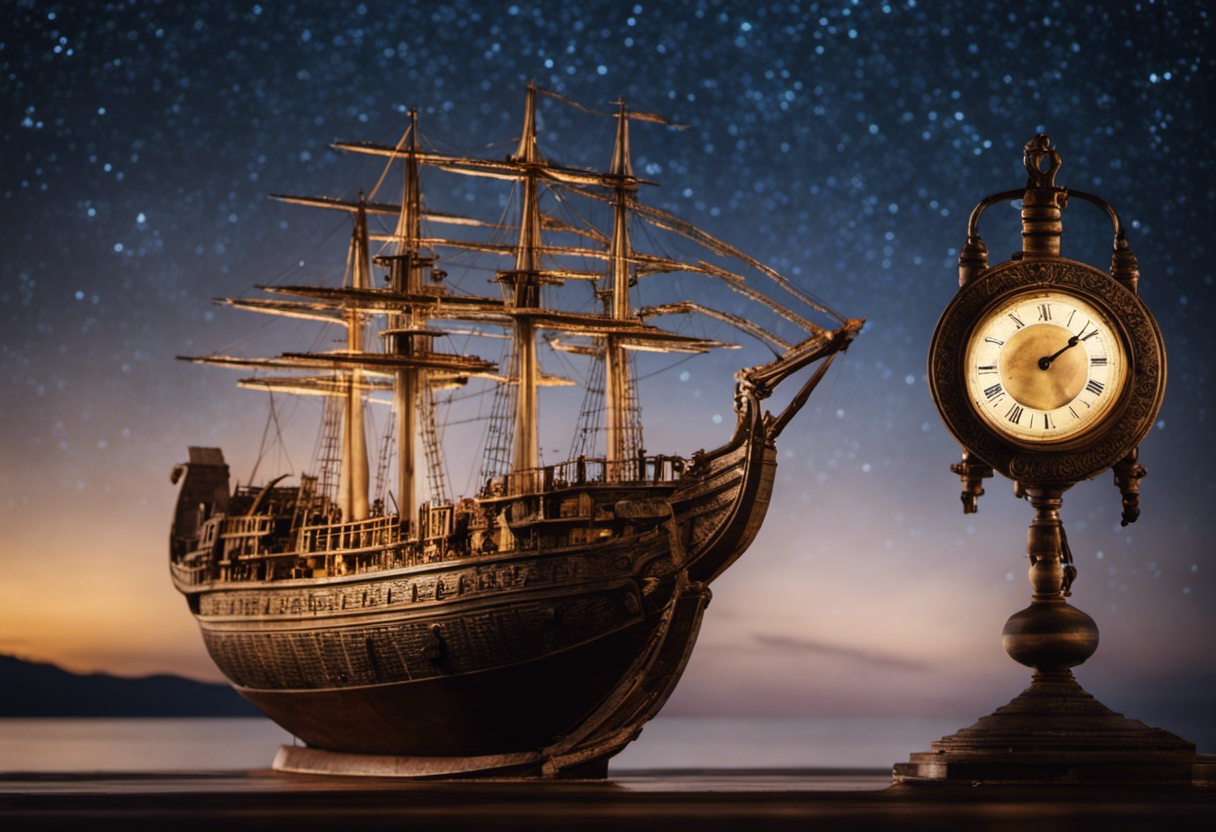

Timekeeping played a crucial role in ensuring the accuracy and efficiency of ancient Greek maritime navigation. The impact of timekeeping on ancient Greek trade cannot be overstated. The Greeks relied on precise timekeeping to plan their expeditions, determine the best times for departure and arrival, and calculate travel distances. This allowed them to navigate the vast Mediterranean Sea with confidence and precision.
One of the primary tools used in maritime timekeeping was the sundial. Sundials were portable devices that used the position of the sun to indicate the time of day. They were widely used by ancient Greek sailors to determine their latitude and longitude, as well as to measure the duration of their voyages. Sundials were particularly useful during daylight hours, when other timekeeping devices, such as water clocks, were less effective.
The use of sundials in maritime timekeeping revolutionized ancient Greek trade. It allowed sailors to accurately estimate the time it would take to reach their destinations, ensuring timely deliveries of goods and enabling efficient trade routes. The ability to navigate the seas with precision also reduced the risk of shipwrecks and increased the safety of maritime journeys.
Celestial Navigation: Using the Stars to Track Time at Sea
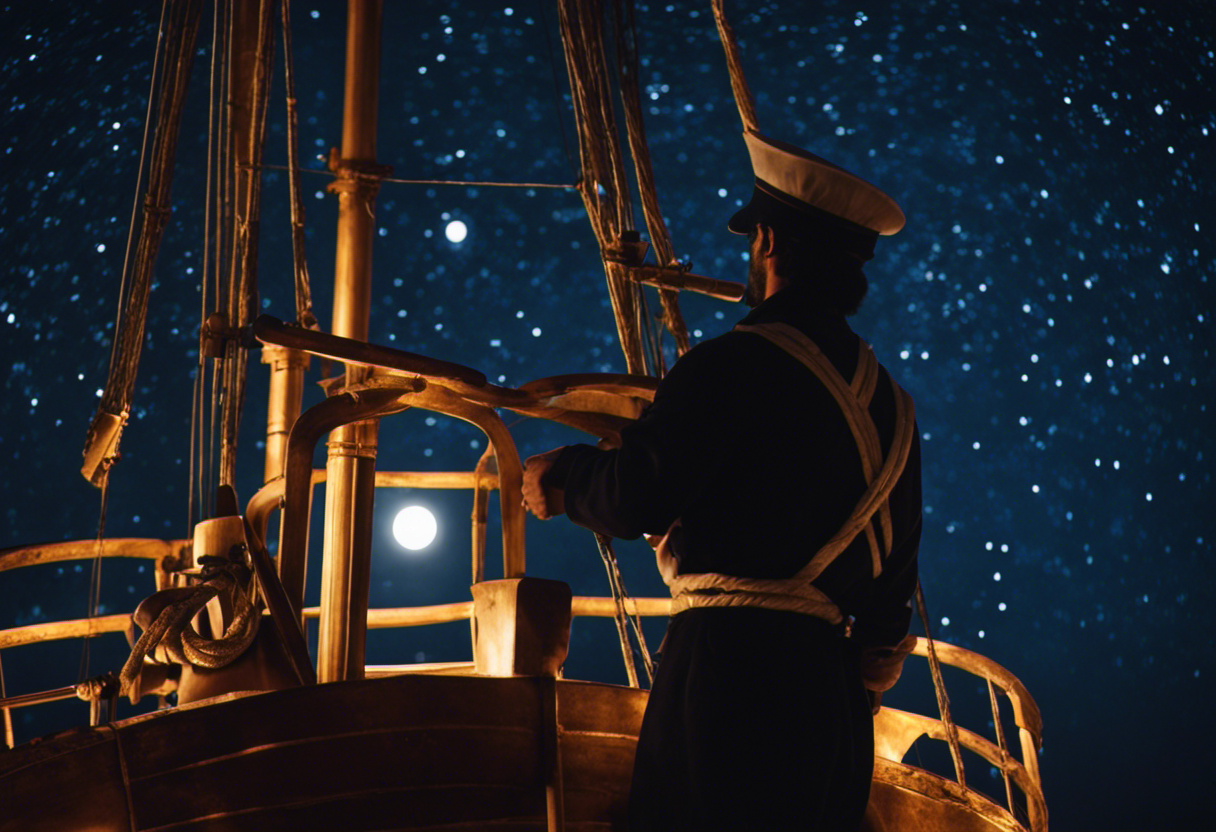

While ancient Greek sailors relied on sundials for timekeeping during daylight hours, they also utilized celestial navigation techniques to track time at sea using the stars. These techniques allowed them to determine their position and the time of day or night, even when the sun was not visible. To navigate using the stars, ancient Greek sailors made use of star charts, also known as celestial maps. These charts were carefully crafted and depicted the positions and movements of various stars and constellations. By comparing the positions of the stars in the sky with those depicted on the charts, sailors could determine their latitude and approximate time.
Furthermore, ancient Greek myths about the stars played a significant role in celestial navigation. The Greeks believed that the gods and goddesses resided in the heavens and that the constellations were representations of these divine beings. These myths provided the sailors with not only a means to navigate but also a connection to their cultural and religious beliefs. By identifying and following specific constellations, such as the Pleiades or Orion, sailors could determine their direction and approximate time.
The Development of Water Clocks: Ancient Greek Innovations in Timekeeping
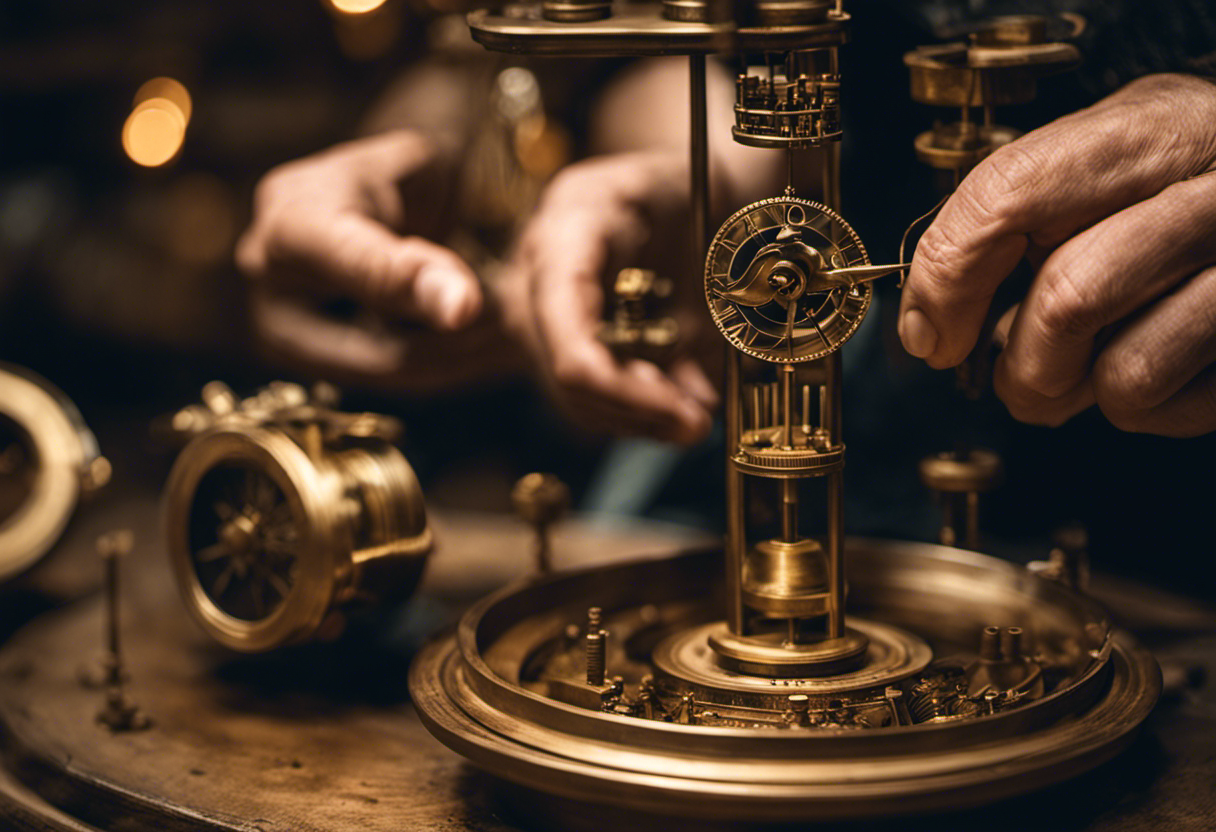

The development of water clocks in ancient Greece marked a significant innovation in timekeeping. These clocks utilized the flow of water to measure time, with intricate mechanisms that allowed for precise and consistent measurements. Their accuracy in timekeeping was a testament to the advanced engineering skills of the ancient Greeks.
Furthermore, the design and principles behind these water clocks laid the foundation for modern clock technology, showcasing the lasting influence of ancient Greek innovations in timekeeping.
Water Clock Mechanics
Ancient Greek scholars pioneered the incorporation of water into timekeeping devices, revolutionizing the mechanics of water clocks. Their innovations in water clock design resulted in increased accuracy and functionality.
Here are four key elements of water clock mechanics in ancient Greece:
- Water flow: Water clocks relied on a regulated flow of water from an upper vessel to a lower one. The rate of flow was carefully controlled to measure the passage of time.
- Floats and valves: Floats and valves were used to regulate the flow of water. The floats would rise as the water level increased, closing the valve and stopping the flow. When the water level decreased, the valve would open, allowing water to flow again.
- Clepsydra: The clepsydra, or water thief, was a mechanism that allowed water to flow at a constant rate, ensuring the accuracy of the water clock.
- Graduated scales: Water clocks often had graduated scales or markers to indicate the passage of time. These scales could be marked with hours, minutes, or other divisions of time.
The development of these water clock mechanics by ancient Greek scholars greatly advanced timekeeping accuracy and paved the way for future innovations in time measurement.
Accuracy of Timekeeping
Greek scholars’ innovations in water clock design and their incorporation of water into timekeeping devices greatly enhanced the accuracy of timekeeping in ancient Greece. The importance of accuracy in timekeeping cannot be overstated, especially in maritime navigation where precise time measurements were crucial for determining longitude, calculating ship speed, and predicting tides.
The advancements in timekeeping made by the ancient Greeks revolutionized the field, allowing sailors to accurately measure time regardless of the conditions at sea. Water clocks, with their regulated flow of water, provided a reliable and consistent means of measuring time, even in rough waters. This innovation allowed for more accurate calculations and improved the overall efficiency and safety of maritime travel.
The Greek advancements in water clocks laid the foundation for future developments in timekeeping technology, shaping the way we measure time to this day.
Influence on Modern Clocks
Due to their advancements in water clock design, ancient Greek innovations in timekeeping have had a lasting influence on the development of modern clocks. The historical significance of their contributions can be seen in the following ways:
- Water Clocks: The ancient Greeks developed sophisticated water clocks that used the flow of water to measure time. These early devices laid the foundation for the development of mechanical clocks in later centuries.
- Mechanical Innovations: The Greeks also made important mechanical innovations in timekeeping, such as the use of gears and escapements. These inventions were crucial for the development of accurate and reliable clocks.
- Standardization of Time: The Greeks played a significant role in the standardization of time measurement. They introduced the concept of dividing the day into 24 equal hours, which is still used in modern timekeeping.
- Cultural Influence: The Greek concepts of timekeeping spread throughout the ancient world, influencing the development of clocks in other civilizations. This cultural exchange further contributed to the evolution of modern timekeeping.
The Role of the Moon in Maritime Timekeeping
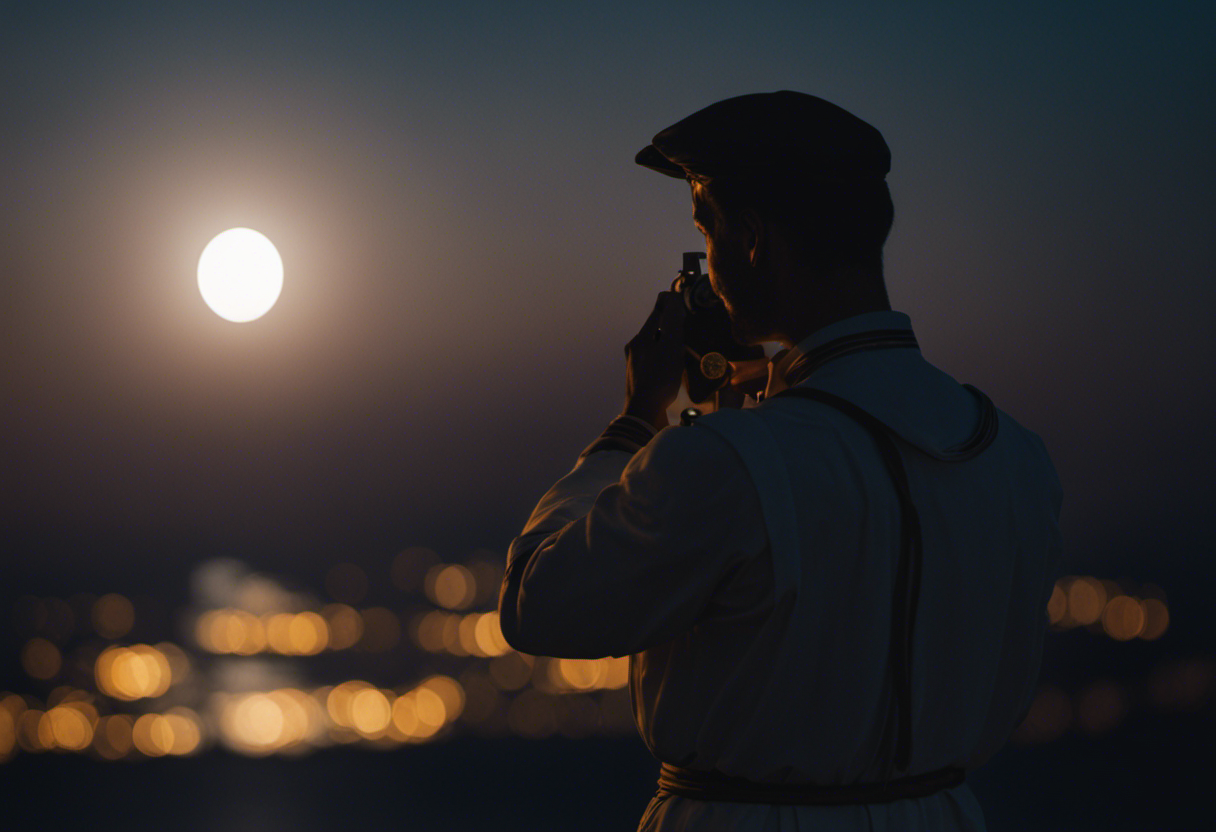

A significant aspect of maritime timekeeping involves the use of lunar phases to determine tides and navigate the open waters. The moon’s gravitational pull on the Earth is responsible for the rise and fall of the tides, which is crucial information for sailors. Understanding the moon phases and the lunar cycle allows sailors to predict the height and timing of the tides, enabling them to safely navigate through shallow waters and avoid dangerous areas.
The moon goes through different phases as it orbits the Earth, resulting in a constant change in the amount of light it reflects. These phases include the new moon, first quarter, full moon, and last quarter. By observing the moon’s appearance and recording its phase, sailors in ancient Greece could calculate the current stage of the lunar cycle. This information, combined with their knowledge of the tides, helped them determine the best time to set sail or anchor their ships.
In addition to aiding navigation, the moon also provided sailors with a natural method of measuring time during the night. By observing the moon’s position in the sky, sailors could estimate the time of night and adjust their course accordingly. This reliance on the moon for timekeeping demonstrates the importance of celestial bodies in ancient maritime practices.
Tides and Time: Understanding the Connection in Ancient Greek Navigation
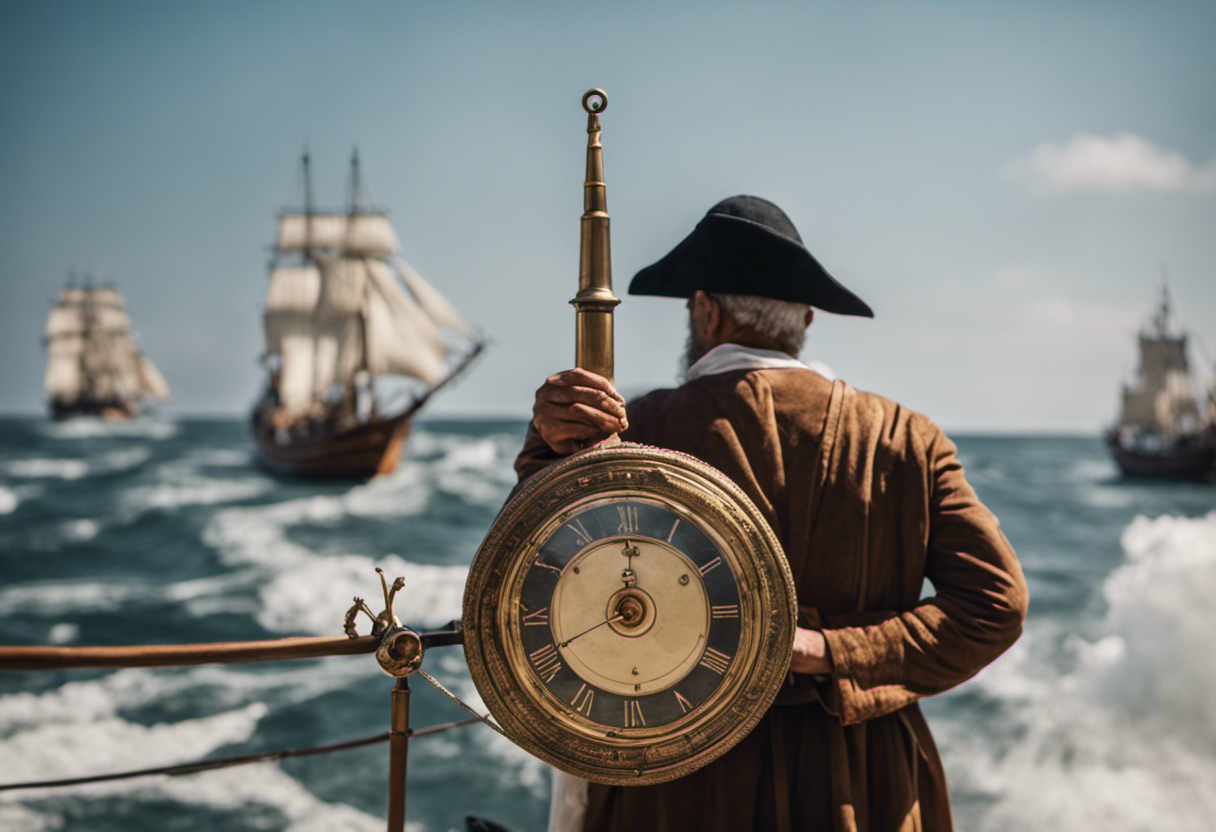

The correlation between tides and the measurement of time played a crucial role in the navigation practices of ancient mariners in Greece. Understanding the connection between tides and time was essential for sailors to plan their journeys effectively and safely. Here are four key points highlighting the importance of tides in ancient Greek navigation:
- Tides and navigation: Greek mariners recognized that the rise and fall of tides were influenced by the position of the Moon and its gravitational pull on the Earth. They observed that tides could significantly affect the depth of water and the speed of currents in coastal areas, which had a direct impact on navigation.
- Lunar cycles and sailing: Ancient Greeks closely studied the lunar cycles to predict the timing and height of tides. They developed calendars based on the Moon’s phases to determine the best times for sailing, taking advantage of favorable tidal conditions to navigate more efficiently.
- Safe harbor selection: Knowledge of tidal patterns helped Greek sailors select safe harbors and anchorages. They sought locations where tides would not leave their vessels stranded or exposed during low tides, minimizing the risk of damage to their ships.
- Passage planning: Greek navigators used their understanding of tides to plan their routes. They timed their departures and arrivals based on tidal movements to ensure smooth passages through narrow channels and to avoid treacherous areas with strong tidal currents.
Timekeeping Instruments: Tools of the Trade for Ancient Greek Sailors
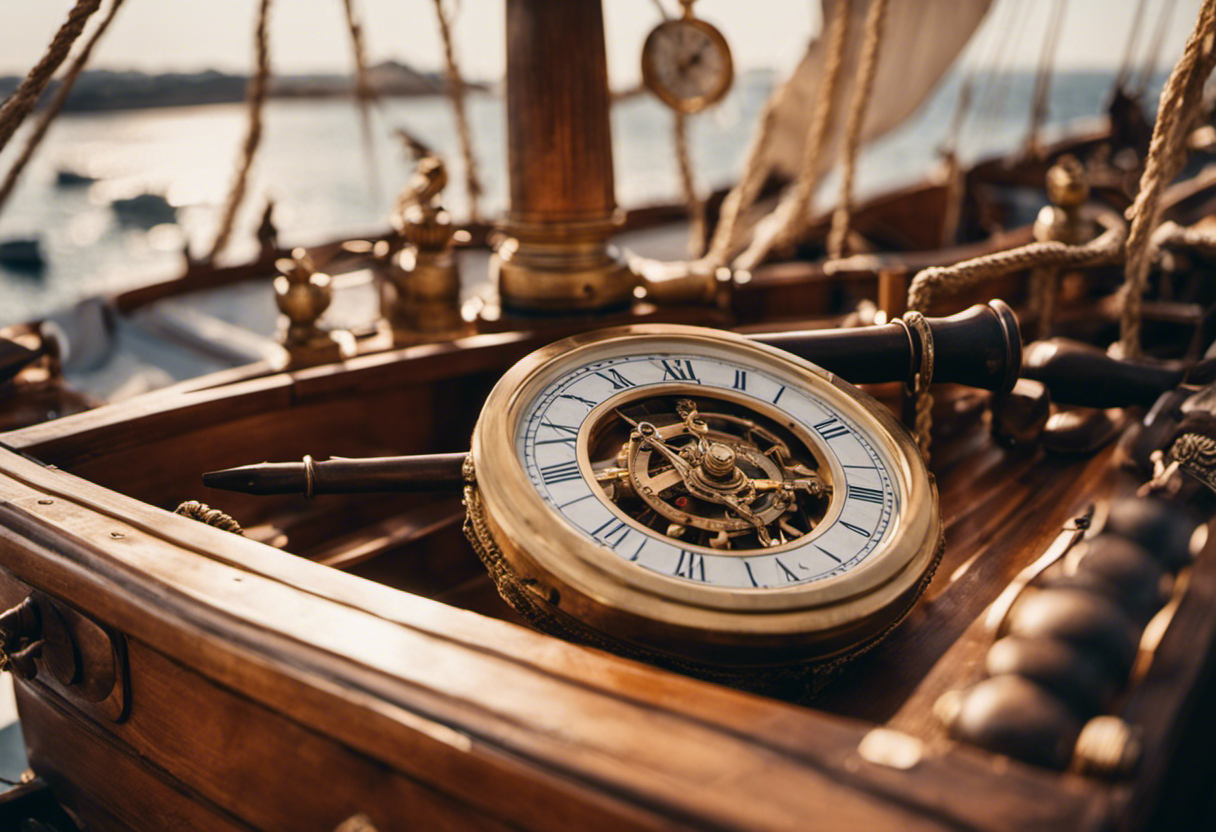

Utilizing precise celestial observations, ancient Greek sailors relied on timekeeping instruments to accurately measure the progression of time during their maritime journeys. These instruments played a crucial role in ensuring the safe navigation of their vessels and the successful completion of their voyages.
One of the most important timekeeping instruments used by ancient Greek sailors was the sundial. This instrument relied on the movement of the sun to indicate the time of day. By aligning the sundial with the sun’s rays, sailors could determine the hour and calculate their position relative to their desired destination. The sundial was particularly useful during daylight hours when the sun was visible.
Another timekeeping instrument utilized by ancient Greek sailors was the water clock, also known as a clepsydra. This device measured time by monitoring the flow of water from one container to another. The rate at which the water flowed allowed sailors to accurately track the passing of time. The water clock was especially useful during the night when the sundial was rendered ineffective.
In addition to these instruments, ancient Greek sailors also relied on celestial navigation techniques to further enhance their timekeeping abilities. By observing the positions of the stars and constellations, sailors could determine their latitude and approximate their longitude, thus aiding in their navigation.
In conclusion, timekeeping instruments played a vital role in the maritime endeavors of ancient Greek sailors. The sundial and water clock, along with celestial navigation techniques, allowed sailors to accurately measure the progression of time, ensuring the success and safety of their journeys.
These tools of the trade were crucial in the development of ancient Greek navigation and contributed to their reputation as skilled seafarers.
Navigating the Seasons: How Ancient Greek Mariners Used the Nautical Calendar
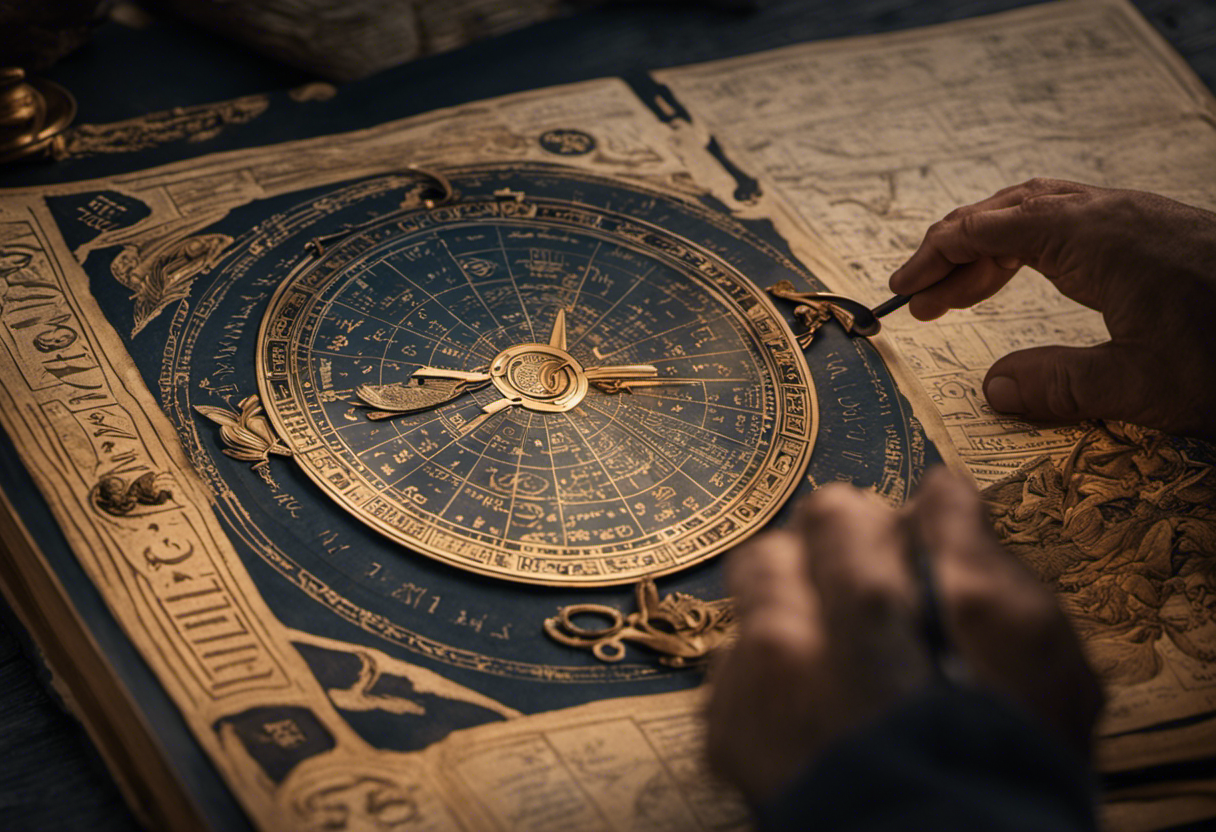

Ancient Greek mariners relied on a combination of celestial navigation techniques, lunar phases, and constellations to navigate the seasons effectively.
Celestial navigation allowed them to determine their latitude by observing the position of the stars and the sun.
They also paid close attention to the lunar phases, as these would indicate the tides and help them navigate shallow waters.
Additionally, the ancient Greeks used specific constellations as navigational markers, allowing them to traverse the seas with greater accuracy and confidence.
Celestial Navigation Techniques
One of the key techniques that ancient Greek mariners used to navigate the seasons was by observing the positions of celestial bodies in the night sky. By tracking the movement of the stars, planets, and the moon, they were able to determine their position and calculate the time of year.
Here are four celestial navigation techniques employed by ancient Greek mariners:
- Star Mapping: Greek mariners relied on star charts and constellations to navigate their way across the seas. They used known stars, such as Polaris, to determine their latitude and direction.
- Solar Observations: By observing the position of the sun at noon, sailors could determine their latitude. They also used the length of daylight to estimate the time of year.
- Lunar Phases: Ancient Greek mariners used the changing phases of the moon to calculate the time of month. They could also determine their longitude by comparing the moon’s position to the stars.
- Planetary Movements: Greek mariners studied the movements of planets like Venus and Mars to aid in navigation. These planets often appeared in predictable patterns and could be used as reference points.
Importance of Lunar Phases
The significance of lunar phases played a crucial role in the ability of ancient Greek mariners to navigate the seasons and accurately determine their position at sea.
The ancient Greeks used lunar cycles as a key component of their nautical calendar to track the changing seasons and plan their voyages accordingly.
The lunar calendar was based on the observation of the moon’s phases, which allowed mariners to determine the approximate time of year and make informed decisions about navigation routes and weather conditions.
By monitoring the lunar phases, ancient Greek mariners could anticipate the onset of seasonal changes, such as the arrival of favorable winds or the approach of stormy weather.
This knowledge was essential for successful maritime expeditions and ensured the safety and efficiency of ancient Greek seafaring.
Navigating Based on Constellations
Astronomical observations, combined with careful study and interpretation, allowed Greek mariners to navigate the seasons and make informed decisions about their maritime journeys.
By observing the celestial positioning of the stars, ancient Greek mariners could determine their location and navigate the seas with accuracy. They relied on star charts, which were detailed maps of the night sky that depicted the positions of constellations and individual stars.
These star charts provided a reference point for sailors to identify specific constellations and track their movement throughout the year. By understanding the patterns and movements of the stars, Greek mariners were able to navigate based on the changing seasons, ensuring safe and efficient voyages.
This knowledge of celestial navigation was essential for ancient Greek mariners to successfully traverse the seas and explore new territories.
Conclusion
In conclusion, the ancient Greeks had a deep understanding of the importance of timekeeping in maritime navigation.
Through celestial navigation, the use of water clocks, and observation of the moon and tides, they developed sophisticated methods to track time at sea.
These timekeeping instruments proved to be invaluable tools for ancient Greek sailors, allowing them to navigate the seasons and successfully traverse the vast seas.
Their mastery of the nautical calendar demonstrates their remarkable ingenuity and resourcefulness in the field of maritime navigation.

